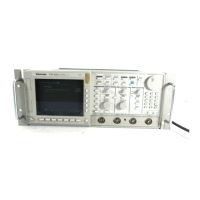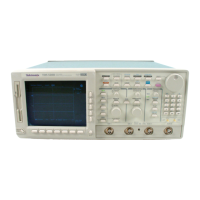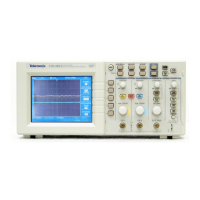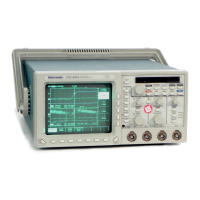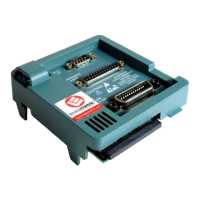Triggering on Waveforms
3–84
TDS 684A, TDS 744A, & TDS 784A User Manual
By pressing Intensified (side), you can display an intensified zone that shows
where the delayed timebase record may occur (a valid delay trigger event
must be received) relative to the main trigger on the main time base. For
Delayed Triggerable After mode, the start of the intensified zone corresponds
to the possible start point of the delayed time base record. The end of the
zone continues to the end of main time base, since a delayed time base
record may be triggered at any point after the delay time elapses.
To learn how to define the intensity level of the normal and intensified
waveform, see Adjust Intensity on page 3–29.
Now you need to bring up the Delayed Trigger menu so that you can define
the delayed trigger event.
6. Press SHIFT DELAYED TRIG ➞ Delay by (main) ➞ Triggerable After
Time, Events, or Events/Time (side) (See Figure 3–50.)
Figure 3–50: Delayed Trigger Menu
7. Enter the delay time or events using the general purpose knob or the keypad.
If you selected Events/Time, use Time (side) and Events (side) to switch
between setting the time and the number of events.
Hint: You can go directly to the Delayed Trigger menu. (See step 6.) By
selecting one of Triggerable After Time, Events, or Events/Time, the
oscilloscope automatically switches to Delayed Triggerable in the Horizontal

